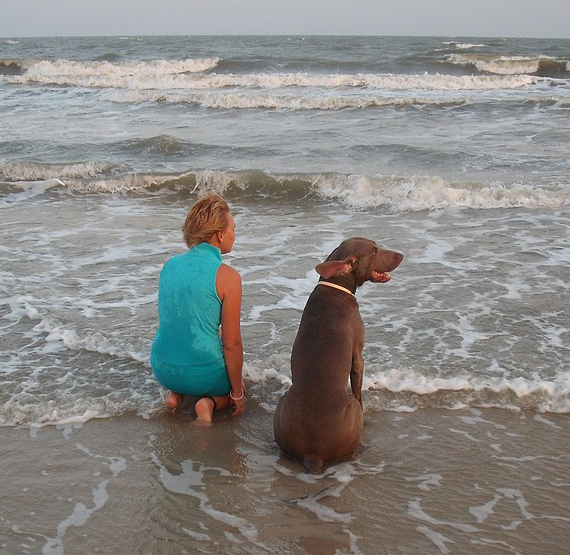How We Choose Our Dogs (in ThriveTypes + Body Psychology)
Posted on Thursday, February 9, 2017
The BBC just published a simple article based on scientific research about how dogs mirror their owners emotionally and also about how humans and dogs influence each other.
We’ve all known for years that dogs pick up people’s emotions and communicate about them. Many books on raising and training puppies and dogs describe this. I’m sure you’ve seen a dog stretch out it’s front paws with butt in the air to play with you or yawn to suggest you calm down. Dogs communicate with us – and many of us consciously and subconsciously listen.
Humans are great at picking dogs that match their ThriveTypes. For example, Quick Pacing people often choose Quick Pacing dogs. I had a friend who was way over on the Quick end of the bell curve in Pacing, as was her Vizsla.
I’m not surprised by the article that our personalities impact each other, and what I’m pointing out is that we also often also start out more similar than random coincidence.
I believe just about all people subconsciously read each others’ ThriveTypes in their eyes (and Body Psychology in body language), and we also do this with dogs.
For example, I know someone with Server Talent who was the last born child in her family who also feels some struggle with being accepted and with stepping into easy connection with others (a common Server Lesson), who chose a dog who was the runt of their litter and tends to not include herself and connect with people, just like her owner. This dog even shys away from her owner at times. I believe the dog was like this long before she was chosen. I hear descriptions of this behavior from when the dog was a puppy with her litter. Early puppyhood psychology impacts dogs’ too, just like childhood impacts humans. The human subconsciously chose the dog as a mirror, and perhaps to repeat childhood patterns.
In the Lessons of Love and relationships, looking at ThriveTypes, we typically choose romantic partners who are 1) like parents, 2) opposites, 3) mirrors and then eventually with a 4) similar purpose. Most people choose romantic partners who are a combo of lessons 1 & 2. In my matchmaking work, I’m almost always helping people learn to see and date mirrors, lesson 3.
We often, however, choose friends who are mirrors and also pets, particularly dogs, who are our mirrors (lesson 3). We choose friends and dogs who are a better fit, a better match, than we choose dates! We do this via ThriveTypes in their eyes and also Body Psychology in their behavior using our mirror neurons. I believe we feel more comfortable and safe being reflected and seen by our dogs just as we feel at greater ease being “gotten” by our friends, almost always so much more so than we do by our romantic partners.
So I wonder how these scientific studies account for this. I bet they don’t.
I can share an example about myself too. I have Warrior Talent. My dog, Marlowe, had fear aggression. I kept wondering, how must I get aggressive when I feel scared (a common Warrior Lesson). It wasn’t until after my dog died and I was in Katie Hendricks’ Leadership and Transformation (LAT) program that I saw how much Fear was running so much of my life and how I did indeed go into the Fight form of Fear so much more often than I realized. The first week I had my dog, when he was in puppy kindergarten, he arrived early and ran around and picked up almost all the toys and sat on them. He was who he was in the beginning. Oh, our mirrors!
So while human and dogs may impact each other, I believe that humans also choose dogs that match them.
The “moral” of this story? Look to your dog for your own lessons (anything you complain about might be about you too, not only a projection, also a personality trait), and choose romantic partners for the amount of ease you anticipate experiencing with them, just as you’d choose your dog.
‘Dogs mirror owners’ personalities‘ from the BBC
Category: Uncategorized

